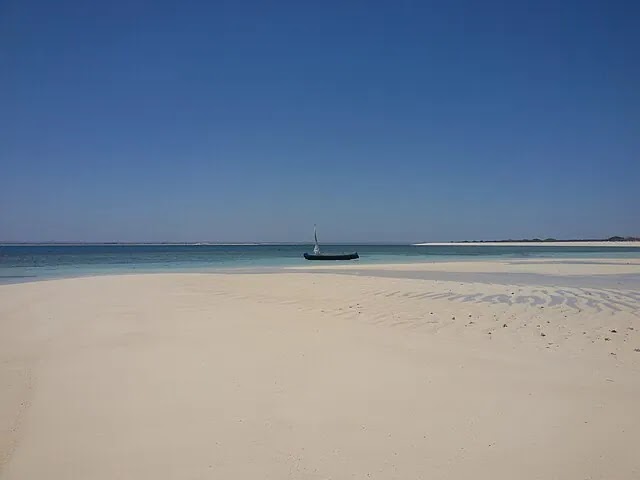Nosy Ve is a Protected Marine Area in the southwestern part of Madagascar. It is south of Tulear and 40 km south of the tourist village of Anakao.
It lies between latitudes 25 ° 29/25 ° 09 South and longitudes 44 ° 50/45 ° 06 East. It covers an area of 92080 ha, with Core Areas totaling 28,820 ha and Buffer Zones totaling 63,260 ha.

The property has eight parcels in two clusters. Some are along the coast next to Tsimanampetsotsa National Park.
This site includes sections of the coral reef system of South West Madagascar. Experts recognize the system as the third-largest reef system in the world.
More Information About Nosy Ve
The location of Nosy Ve is in the Mozambique Channel. This beautiful park has a diverse range of habitats. These include fringing reefs, barrier reefs, and coral reef beds.
There are also valuable seagrass areas, open sea, rocky coasts, and sandy beaches. Nosy Ve contains about 140 species of coral and 240 species of fish.
There are also rare species, such as Coelacanths. There are also marine turtle species, dugongs, dolphins, and whales. Nesting sea turtles use the sandy beaches.
It is a coral island, currently uninhabited by humans, located some 5 km from Anakao. It is about 4.5 km long and around 1.8 km wide. Along its perimeter, there are sandy beaches.
In the middle, there is a green oasis with low vegetation. In 1888, the French first disembarked here. Then, they transferred to the land and conquered it.
Still, the island did not lose its notable function for the newcomers. It served as a port for local trade and a dispatching station for slaves.
There used to be a permanent military camp with its crew. But, some traces suggest that merchants used to stop here back in the 17th century.
The island is the holy land of the Vezo people, an indigenous population. They annually offer a zebu sacrifice here in line with their tradition.
The island is the burial place of their ancestors. Burial is a notable event in this part of Madagascar. People strictly adhere to tradition.
The family and villagers ask for a blessing through prayer to the Creator and the ancestors. After that, they provide offerings.
These offerings are black goat, honey, and rum. They also make similar offerings for Vorombe, the owner of the sea.
These include a goat, a rooster, red rum, and more. The Vezo believe that Vorombe is the incarnation of the ancestors who died at sea.
In other words, they trust he is the spirit of those who drowned in the ocean and see him as a powerful guardian.
People make these offerings to the gods during special ceremonies. The lunar calendar organizes the ceremonies. On that occasion, people invoke the god Vorombe.
Specifically, designated people are in charge of communication with him. This island is valuable to the Vezo people. Visitors must follow the usual rules.
They must not leave anything, take anything, disturb, or feed the animals. In addition, there are important rules about fady, or local taboos.
The visitors must respect places used for worship and ceremonies. They should not go towards the tombs. The authority strictly forbade to urinate or defecate on this holy island.
There are no mentionable facilities. Ultimately, the authorities prohibit bringing dogs onto this site. They also ban any form of pork meat. It is all nicely visible on an information board.

A contemporary, simple structure on the island displays the board. There is an office to buy tickets for the visit to the protected area.
The structure of the small visitors center was not as interesting. However, the view from a wooden platform there is much more fascinating.